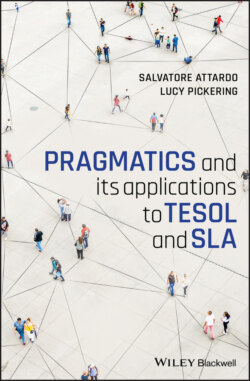Читать книгу Pragmatics and its Applications to TESOL and SLA - Salvatore Attardo - Страница 8
Typographical Conventions
ОглавлениеNumbered examples are set apart, whereas un-numbered examples appear in the running text in italics, as for example in the present example. Translations appear in single quotes following the original. Grammatical constructions appear in small caps, for example, leave X alone. Mentioned words appear in double quotes: “boy” has three letters. The use/mention distinction
(1) The boy kicked the ball (use/object)
“Boy” consists of three letters (mention/metalanguage)
is parallel to the object language versus metalanguage (see Metalanguage and Object Language section of Chapter 10).
Ungrammatical sentences are marked by a prefixed asterisk (*), whereas pragmatically problematic utterances are marked by the symbol (※); contrast
(2) * The children eats breakfast.
※ Excuse me sir, would you mind getting out of my face?
Tone units are indicated by double vertical bars, as in the example below
(3) || GRAvy ||
the usual conventions apply:
CAPS indicate the prominent syllable
Rising, falling, and level tones are indicated by , , and , respectively.
Tone markings precede the tonic syllable: || GRAvy ||
Cross references within the book are given by chapter, section, and subsection: so a cross reference (see 5.3.2) means chapter 5, section 3, subsection 2.
